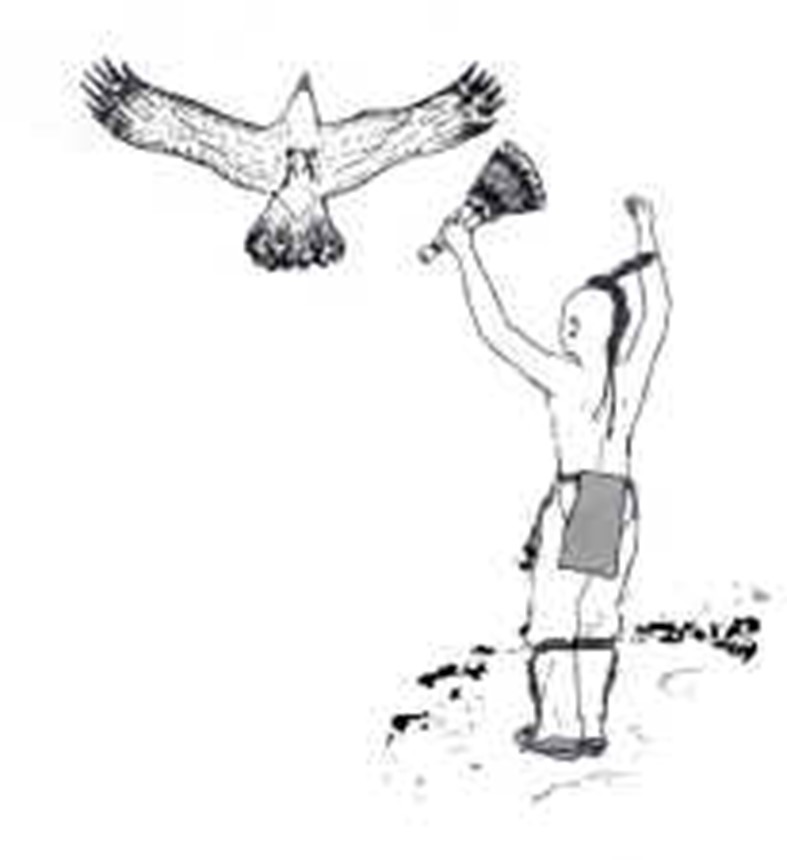
November 24, 2020
By Vincent Banko, Seasonal Naturalist at Killen Pond State Park
If you live in Kent County, Delaware, you live on land that originally belonged to the Lenape and Nanticoke people (if you don’t live in Kent County and want to see whose land you’re standing on, click here). American history started far before this land was colonized – and in what we now call Kent County, it started with the Lenape.
The word “Lenape” has many different translations – a few examples are “men of men,” “original people,” and “men of our nation.” Descended from the Nanticoke, the Lenape are one of the oldest tribes in the Northeast, having lived on the Delaware River watershed for over 10,000 years (although recent evidence in the form of a single squash seed suggests they’ve been here closer to 15,000 years). Their nation once spanned from modern-day East Pennsylvania and New York to New Jersey and, of course, Delaware.
The Lenape people lived a largely sedentary lifestyle, changing campsites based on the season, but remaining within the Delaware River region; this is due to their heavy reliance on agriculture, growing corn, squash, beans, and tobacco. The Lenape lived in wigwams, which are dome-shaped homes made of bark and animal furs. Unlike other Indigenous nations, which had longhouses, Lenape had non-communal living spaces, with each family having their wigwam.
Lenape families were very small, consisting of about two children, but the tribe worked together to support each other and function as a giant family. Contrary to our modern patriarchy, the Lenape clans were matrilineal, where the name and power were traced through the women rather than the men. Women held much power and were highly respected as the givers of life. When making major decisions, whether it was to go to war or remove the chief from power, women had the final say.
The Lenape worshiped one God, a genderless Creator, and believed in the presence of additional spirits referred to as the Manetu. They held ceremonies around honoring good Manetu and driving out evil Manetu, and additional ceremonies revolved around the harvest, births, marriages, and successful hunts. Vision quests were another aspect of spiritual tradition; coming-of-age Lenape youth would retreat to the wilderness for a few days to fast and experience visions, which would tell them of their future and reveal their spirit guardian.
After a member of the tribe died, their name was permanently retired, never to be said or used again out of respect to the deceased’s family. Bodies were buried along with food to provide them sustenance on their journey to heaven. The Ane, or Milky Way, was considered the road to heaven; good people followed the road and lived with the Creator, while evil people were forced to live outside of the Creator’s realm for all eternity.
The Lenape nation was made up of over 30 sub-tribes, each one consisting of about 12 families. But due to colonization and the reduction of the Lenape population, the nation was forced to consolidate into three major, regional sub-tribes. Each of these sub-tribes was named based on its geographical location on the Delaware River and had its totem animal which was said to provide guidance and guardianship to its tribe. The northernmost tribe was the Monseys (“people who walk in stone”), those in the middle of the Lenape territory were the Unami (“downriver people”) and the southern branch of Lenape was the Unalatchtigo (“people who live near the big water”). Their totemic animals were a wolf, turtle, and turkey respectively.
Unfortunately, this is the majority of the information we have regarding the Lenape people and their culture as a result of the European colonization of the Americas. A vast amount of knowledge has been lost. While their legacy continued into the post-contact era, it continued through hardship and tragedy as the Lenape fought to maintain their culture while others worked to erase it.
Thank you to Chief Dennis Coker and the Lenape Indian Tribe of Delaware for their aid and support. For more information, click here







